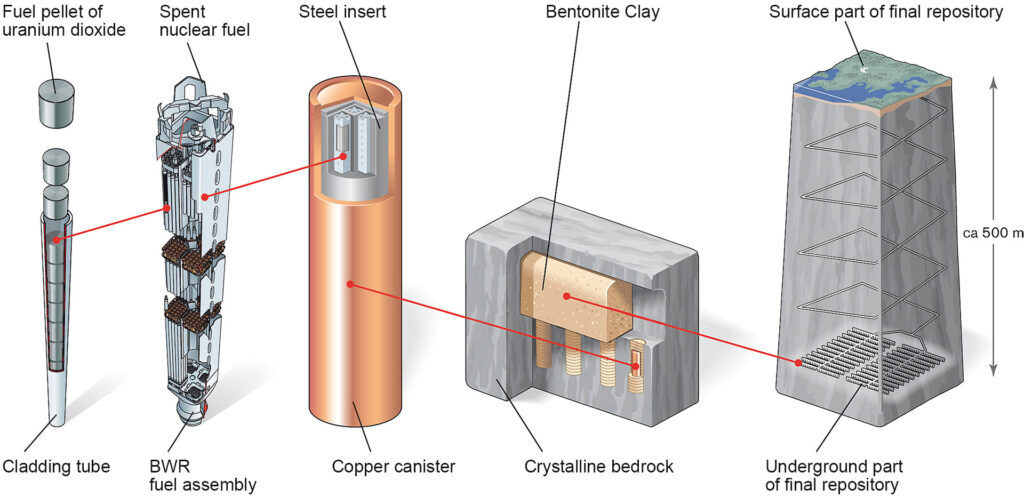Disposal method and its barriers
Our method of final disposal
SKB uses a special method for final disposal of the spent nuclear fuel. It is called KBS-3 and is based on three protective barriers: copper canisters, Bentonite clay and the Swedish bedrock.
All spent nuclear fuel is currently under temporary storage at the interim storage facility (Clab) in Oskarshamn. The radiation gradually decays and the waste becomes progressively less dangerous. But it also contains substances that are active for a very long time and these need to be finally disposed of for many years to come.
SKB is therefore planning to construct a Spent Fuel Repository at Forsmark in Östhammars Municipality. The method that has been developed involves first encapsulating the nuclear fuel in copper canisters. The sealed copper canisters will then be placed in a system of tunnels about 500 metres deep in the solid bedrock. Here they will be embedded in Bentonite clay.
Copper canisters
The copper canisters will have steel inserts. They are five metres long and one single capsule will weigh about 25 tons when it is filled with spent fuel. The outer casing consists of five-centimetre-thick copper. The canisters have been constructed to withstand corrosion and the mechanical forces that can result from movements in the rock surrounding the Spent Fuel Repository.
Buffer
The copper canisters will be embedded in Bentonite clay in the Spent Fuel Repository’s tunnels. This clay will act as a buffer and protect the canister from corrosion and minor movements in the bedrock. The clay buffer will gradually absorb water and swell to fill the space around it and any cracks in the rock. If any cracks occur in a canister, the clay buffer will prevent water from entering it. The buffer also prevents the escape of any radioactive substances into the rock.
Bedrock
The final barrier in the multi-barrier system is the bedrock itself. Its role is to isolate the radioactive waste from the surface environment. The bedrock provides a stable chemical environment and protects the repository from events occurring at the surface.
However, groundwater is present deep underground and moves through the fracture systems in the rock. If radioactive substances were to escape from a canister and pass through the bentonite buffer, they could be retained by fracture surfaces, fracture minerals, and the micropores within the rock.The depth and properties of the bedrock contribute to keeping the spent nuclear fuel separated from humans and the environment for at least 100,000 years. This ensures that the canister and buffer can maintain their protective functions for an extremely long time.
Together, these natural and engineered barriers create a safe final repository for spent nuclear fuel — designed to protect both people and the environment far into the future.
Last review: August 13, 2025
Last review: August 13, 2025
